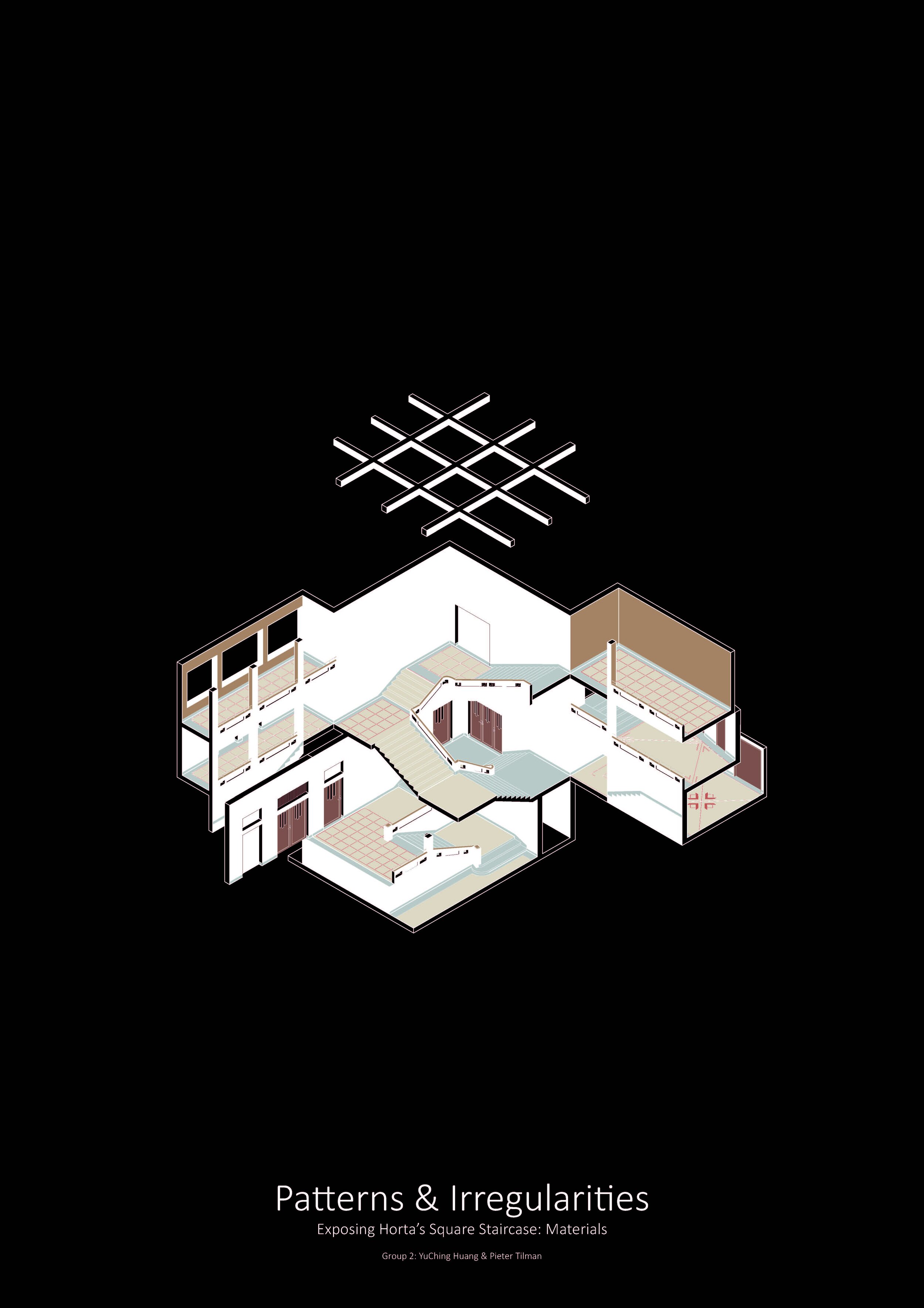On Patterns & Irregularities
This research work focusses on the documentation of the BOZAR in Brussels and the representation of complex spatiality in drawing. Since the existing drawings of the BOZAR depict plans and sections, the complexity is not represented. In this research the we concentrated on the representation of complex spatiality in relation to the theme of monumentalism.
In this specific analysis of the square staircase in the BOZAR designed by Horta we found elements that one could attribute to monumentality, we highlight the three most important. First, the organisation of space, the stairs are surrounded by galleries on two sides from which the person ascending the staircase can be seen. The staircase becomes a place to be seen. Secondly, we noticed that the continuous railing symbolizes the movement upwards and guides the visitor to the galleries surrounding the concert hall. Thirdly, the materials white plaster walls contrast the terrazzo floors and stairs, emphasizing the actual steps in the staircase. We describe these three monumental aspects as patterns. In these three patterns Horta designed several irregularities. The organisation of space is disrupted by the access to the gallery from the third platform. The continuous movement suggested by the railing is disrupted by the sharp angle in the shape of the railing at the fourth platform. The columns on the top floor are coloured brown on the sides and the terrazzo colour of platforms and steps is not consistent, undermining the patterns suggested above. Finally, the doors and niches designed offer the visitor continuous surprises when climbing up the stairs.
The theme, Patterns & Irregularities, was the main inspiration for our folly: Boxed In. In this folly we aim to offer the visitor a surprising bodily experience by a composition of two box-like shapes. When entering the Hortahall the visitor sees the folly in the distance, situated on the elaborate staircase. The black volume seems to be monolithic and predictable. However, when the visitors close in to the design they start to notice a network of patterns and irregularities. When climbing the stairs the visitor notices the white inside and the single rounded corner of the box. Through the small windows, the visitor looks into the black box and finds a wide space with another box inside. When entering the black box the visitor notices the missing piece in the roof structure which allows them to enter the box without effort. The continuous shape, disrupted by a sharp angle intrigues the visitor. The inner box is indented with several niches and the stairs on the inside of the box are almost entirely covered in patterns. The visitor starts to identify patterns and irregularities and the boxes become something to discover, to see, to be seen.



